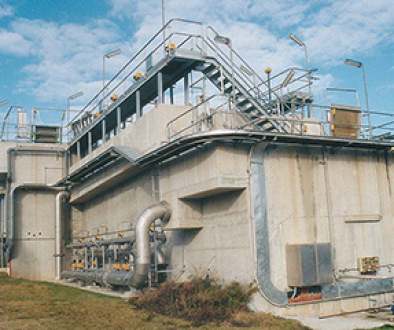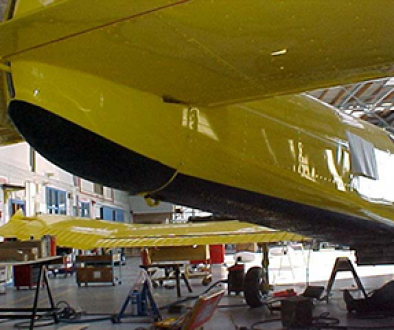Rhino Linings Used in Flood Restoration to Keep Streets and Basements Dry


Ontario, Canada: A major Belleville Traffic Artery and Buildings at Less Risk Due to Flood Restoration
By Luke Hendry, USA
Quinte Conservation is nearing completion of the $700,000 restoration of its flood wall restoration between the Moira River and Cannifton Road.
The work is being done above the McLeod dam just north of College Street East. Quinte Conservation operates an electricity generating station at the dam.
Upgrading the Dam Wall for Greater Flood Protection
Bryon Keene, Quinte Conservation’s water resources manager, said the result will be a long-lasting solution that will keep water where it should be: in the river.
“This is like a levee,” said Keene as he stood on the flood wall. “This will be really great flood protection.”
He said the PVC liner installed along the dam wall in 1978 had decayed and been damaged over the years. That caused problems with a drain system in the head pond—the area where the water gathers before passing through the dam—and water has also been seeping through the liner.
Addressing Flooding Issues for Local Businesses
Water reached the basement of one Cannifton Road business in the spring of 2008 when widespread flooding occurred in the Moira watershed and others.
Rod Bovay, Belleville’s acting director of engineering and development services, said the upgrade will resolve the city’s concerns.
“There was some concern with some groundwater seeping and getting into the basements on the east side of Cannifton Road,” Bovay said, adding the city also wanted to ensure the busy street itself wouldn’t be affected by flooding.
A Collaborative Effort for Long-term Flood Management
Bovay said the city and conservation authority have always worked well together and have been working together on the issues for about two years.
He said the changes mean Quinte Conservation and the city – and therefore residents – will be satisfied.
“They’ll be able to keep the pond at the level they need, but hopefully, we won’t have any impact on the properties on the east side,” said Bovay. “We’re happy to see it get done.”
Keene said the new design should protect public and private property even from high waters of a so-called “100-year flood.”
Once completed, it will look merely like a rocky slope, but the new system will be a big improvement, Keene said.
“We feel it’s going to give us a whole lot longer (flood wall) life,” said Keene.
Rhino Linings’ Polyurea Coating for Durability and Environmental Safety
A fabric lining is placed in a shallow trench and then sprayed with a polyurea coating. Gravel and later larger stones will be layered above that.
“It’s not going to harm the environment because it’s 100% solids. It’s not easily biodegradable,” said Ron LoPresto, technical director for manufacturer Rhino Linings.
The lining is manufactured by Rhino Linings Corp. Technical director Ron LoPresto, who said the installation is similar to lining “a gigantic truck bed” 1,030 feet in length. Jim and Shari Sauer’s Trenton company—currently nameless after a shift in focus—was applying the polyurea Wednesday.
LoPresto said the lining should last for a few decades. “The minimum would be 20 years,” said LoPresto.
Project Completion and Future Maintenance Plans
Keene hopes for a 40-year lifespan.” From here on, it’ll just be annual maintenance,” he said.
The flood restoration is to conclude in the first week of September; the water level will be raised gradually, reaching its usual level by mid-September. Keene said energy generation will resume at about the same time.
Frequently Asked Questions (FAQs):
1. What is a floodwall structure?
A floodwall is a man-made barrier, usually made of concrete or other durable materials, designed to prevent flooding in areas prone to high water levels. It acts as a protective wall, keeping water from rivers, lakes, or oceans from overflowing into nearby streets, buildings, and properties.
2. What is the use of a flood wall?
A flood wall is used to protect areas from flooding by blocking or redirecting water away from vulnerable locations. It helps safeguard homes, businesses, and infrastructure from water damage during heavy rains, storms, or high tides.
3. How to repair flooded walls?
To repair flooded walls, start by removing any water-damaged materials, such as drywall or insulation. Use fans or dehumidifiers to allow the area to dry completely. Next, treat the walls with mold-preventative solutions, then replace the damaged sections with new materials. Finally, repaint or finish the wall as needed. Always ensure proper ventilation to avoid future issues.
For further information, you can contact Rhino Linings directly at 1300 887 780 to discuss your requirements or contact us to find out more about the Rhino Linings product range.




